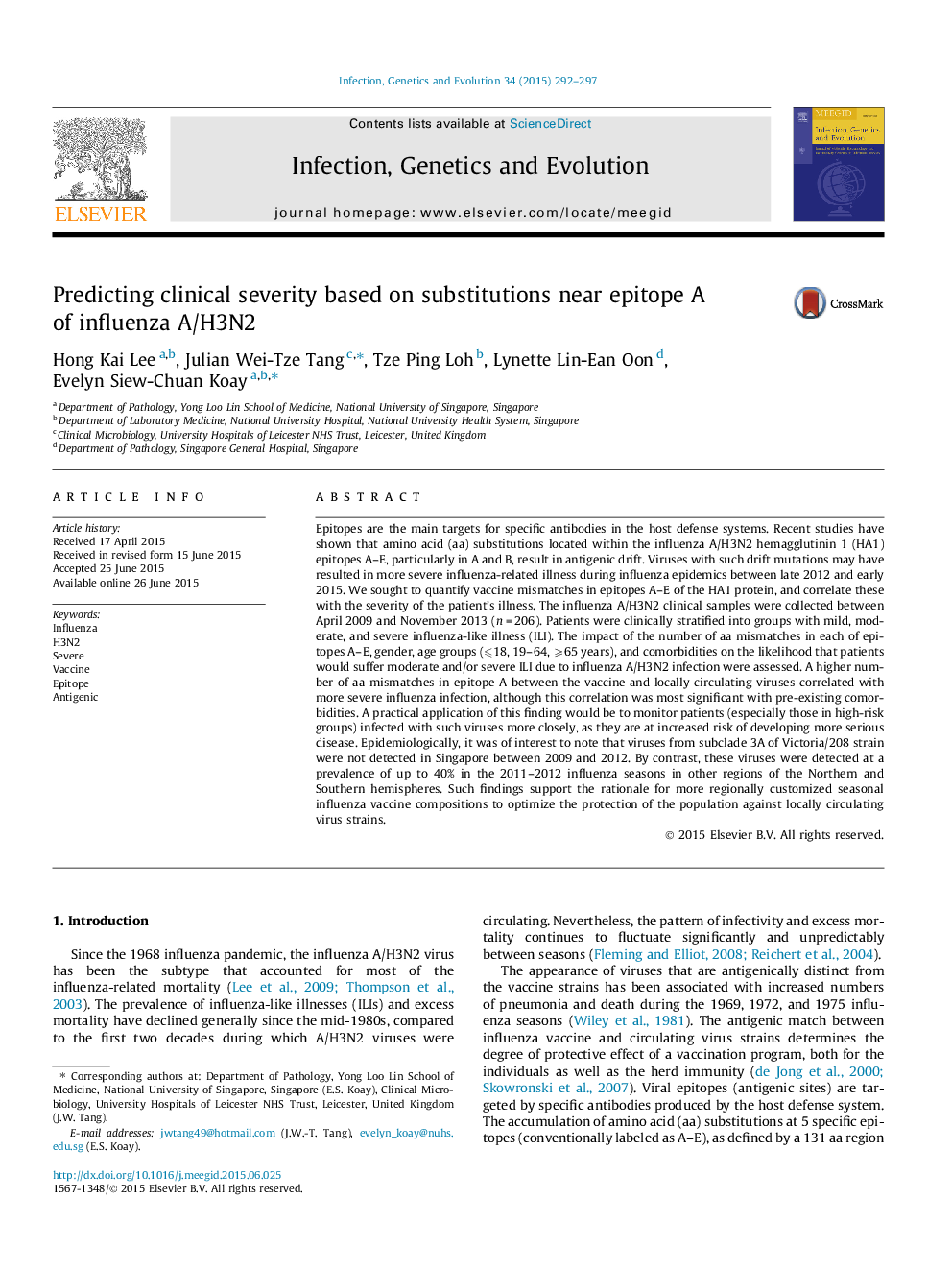| Article ID | Journal | Published Year | Pages | File Type |
|---|---|---|---|---|
| 5909008 | Infection, Genetics and Evolution | 2015 | 6 Pages |
Abstract
Epitopes are the main targets for specific antibodies in the host defense systems. Recent studies have shown that amino acid (aa) substitutions located within the influenza A/H3N2 hemagglutinin 1 (HA1) epitopes A-E, particularly in A and B, result in antigenic drift. Viruses with such drift mutations may have resulted in more severe influenza-related illness during influenza epidemics between late 2012 and early 2015. We sought to quantify vaccine mismatches in epitopes A-E of the HA1 protein, and correlate these with the severity of the patient's illness. The influenza A/H3N2 clinical samples were collected between April 2009 and November 2013 (n = 206). Patients were clinically stratified into groups with mild, moderate, and severe influenza-like illness (ILI). The impact of the number of aa mismatches in each of epitopes A-E, gender, age groups (⩽18, 19-64, ⩾65 years), and comorbidities on the likelihood that patients would suffer moderate and/or severe ILI due to influenza A/H3N2 infection were assessed. A higher number of aa mismatches in epitope A between the vaccine and locally circulating viruses correlated with more severe influenza infection, although this correlation was most significant with pre-existing comorbidities. A practical application of this finding would be to monitor patients (especially those in high-risk groups) infected with such viruses more closely, as they are at increased risk of developing more serious disease. Epidemiologically, it was of interest to note that viruses from subclade 3A of Victoria/208 strain were not detected in Singapore between 2009 and 2012. By contrast, these viruses were detected at a prevalence of up to 40% in the 2011-2012 influenza seasons in other regions of the Northern and Southern hemispheres. Such findings support the rationale for more regionally customized seasonal influenza vaccine compositions to optimize the protection of the population against locally circulating virus strains.
Related Topics
Life Sciences
Agricultural and Biological Sciences
Ecology, Evolution, Behavior and Systematics
Authors
Hong Kai Lee, Julian Wei-Tze Tang, Tze Ping Loh, Lynette Lin-Ean Oon, Evelyn Siew-Chuan Koay,
